Author: declanbaxter
Extended Portfolio Drafts
Declan Baxter – Extended Project Portfolio 8th may 2017
Declan Baxter – Extended Project Portfolio 17th may 2017
Declan Baxter – Extended Project Portfolio 22nd may 2017
Declan Baxter – Extended Project Portfolio 24th may 2017
Declan Baxter – Extended Project Portfolio 5th june 2017
Declan Baxter – Extended Project Portfolio 6th june 2017
Declan Baxter – Extended Project Portfolio 7th june 2017
Declan Baxter – Extended Project Portfolio 20th june 2017
Declan Baxter – Extended Project Portfolio 20th june 2017 updated
Declan Baxter – Extended Project Portfolio 21st june 2017
Declan Baxter – Extended Project Portfolio 21st june 2017 updated 2
Declan Baxter – Final Portfolio
Unit 11
Critically Evaluating Myself.
Career Test
Career test: I took an online test which consisted of a range of questions that would find out what technical skills I acquired and what type of personal skills I had as well. The results below are what the test said about me.


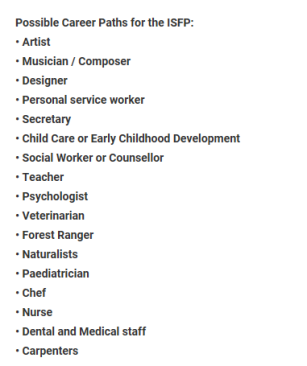
A lot of what the test said about me personality made sense, however it came to the conclusion that I was 100% Introvert which I wouldn’t say was true. Although I would agree I am more introvert than extrovert. I am very composed, I never get emotional over silly things, I take criticism to heart and try to use it to fix the issues. I am very self-reliant and tend to work quietly on my own unless the project is a team task in which I also work well within the team. I am reserved but not as much as the test may have said I am. I do spend a lot of time alone watching film or playing video games however I also spend time with friends and family.
I am 59% Sensing, they describe this a practical, detailed and conventional. I also believe this about myself, I learn better by doing and being practical rather than the opposite. I try to be as detailed as I can about a topic or project in order for people to understand what it is I am trying to create but also relating it to film I try and think about every detail of a project which will add character to the scenes. According to the test I am conventional, I would agree with this. I enjoy some of the more conventional and simplistic ideas that have been done a thousand times but sometimes they have a slight twist or changes that sets them ahead of all the others and makes the whole film worth it.
I am 55% Feeling which is about half and half with Thinking. I am empathetic, I understand and relate to other people’s emotions. The test said I was sensitive, I would agree that I am sensitive. The test also said I was ethical, this meaning I relate to moral principles and what is right, I think about the knowledge I have and act out on what I know.
Finally I am 64% Perceiving, meaning I flexible about things and don’t tend to worry unless its important. I am accepting, I accept why people do things and what ever happens in life. I am also tolerant.
The strengths highlighted by this test are:
I am Self-Reliant and will get things done even if I am on my own as long as I know what needs to be done.
I am Practical, I will understand something if I was shown how to do it or what someone wanted using something like a storyboard.
I am Empathetic, so I would relate with the emotions someone had in a scene or wanted from a scene.
I am Flexible and Tolerant, I would be tolerant of someone telling me what to do or to redo something.
Ambitions
My career ambitions are to be an editor within a friendly close-knit production company producing interesting media projects. I understand a lot of the industry is working with people you barely know however I feel I would prefer the environment of a smaller production company where everyone is familiar with each other and ultimately friends rather than just colleagues.
My perfect job would be to edit a whole range of different media products ranging from sound to simple cutting together. This will require a range of skills. I will need to work well with others as I listen to what it is the director wants me to do, but I will also need to work well on my own as I would be most likely be working alone on the task that has been set for me. I will need skills in editing and everything it involves from the different software’s and how to achieve the effects I am tasked to do. I will need time management skills to be able to work towards deadlines and have everything done for them deadlines in order for the rest of the project to move forward.
I will need to develop more on my editing skills as I have only learned the basics through my course and my own time, I know how to effectively put together clips with appropriate timing and position in order for the greatest effect.
How to Achieve these Goals
I want to be an Editor for mainly narratives. In order to do this I will need to develop my editing skills to the best I can and understand everything there is to know about it.
I would then need to start of as a freelance editor doing work for anyone and anything that is available in order to develop my skills further and get my name around as a reliable editor. Doing this it will get my name around multiple companies and hopefully land me with a solid relationship with one which will lead to on-going employment.
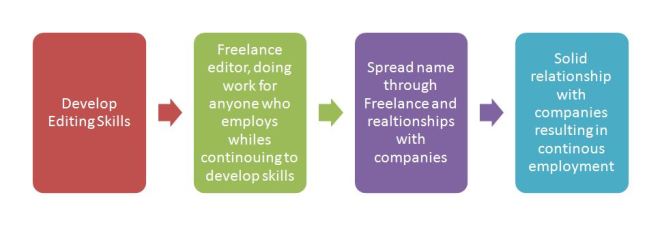
Personal Statement
I am applying for Film Production courses because I am passionate about everything to do with films and TV. It would be so amazing to have a career in the industry and a Film Production is my doorway into that creative world. This subject is my biggest passion, I spend my time watching films and television shows and then transform their techniques and visions into my own work. I also enjoy playing video games. I feel that video games are another form of film as they also follow narrative, and that is the part that I really enjoy about them. They have helped me learn about what makes strong narratives as I get drawn into the world they have created.
I am currently studying the UAL Extended Diploma level 3 Film and TV course at Canterbury College which is an equivalent of 3 A levels. We have developed our skills and techniques used in all areas of the media industry. This has given me a wide range of knowledge about the media, I have also used the editing program Avid, editing new practical project given to us every week and my Final Major Projects. I own Premier pro on my own personal computer and spend a lot of time using that software as well.
I have helped my class mates with their projects throughout our time on the course. I have also worked with my friends outside of the course filming short movies.
I have been working part-time as a Labourer for the last year and have picked up a range of social skills during this time. I have become more confident with people as I have to meet new people every day due to the job. My duty as a Labourer is to make the employers job easier by passing him tools or by continuously providing him with plaster so he doesn’t need to stop. By doing this I have learned how to work as a part of a successful team and how to follow instructions given to me.
After completing this course I would like to become an editor. I enjoy seeing the story
progress through putting all the clips together. I have a good knowledge of how to use editing programs and the techniques used to achieve a professional edit. However, I would like to have full knowledge on how to do this to the best of my abilities. I also have an interest in sound design however want to learn every aspect of editing.
Universities I Applied for:
Canterbury Christ Church University – I applied for Canterbury Christ Church because of the range of roles within the media industry. The course is called Film, Television and Radio, you do all three at the start and as you progress through the course you narrow down the options and follow the path you enjoy the most. This is ideal for me at the moment as I am not sure exactly what path in the media industry I would like to follow.
Anglia Ruskin University – I applied for Anglia Ruskin as the description of the course mentioned ‘your love for storytelling.’ This intrigued me as I am very interesting in following the film and narrative path rather than anything else.
The more traditional methods of progress are Apprenticeships, Internships, Applying directly to a company and working with an agency.
Apprenticeships – Now days apprenticeships are hard to find, there are some companies that will scam you with an apprenticeship such as asking you to pay them to work for example, however this is a minority. Apprenticeships are a good way of getting your foot in the door of the industry and making connections and it may lead to full-time employment once it has ended.
Internships – The down side to an internship is that you may not always get paid, this will require you to rely on other people such as parents for financial help or work full-time whilst you work full time for the internship.
Applying directly to companies – Doing this will cut out the middle man.
Working with agencies – Not all companies may work with an agency. However it will help spread your name faster.
Non-Traditional methods include things that may not be most commonly used as an attempt to gain jobs.
Competitions – Film competitions could be a good opportunity to get your work out to the public, there may be someone interested in what you have produced and may offer you work. Even if no one wants to hire you, there may be someone interested in working for you as they enjoy the type of work you do.
Social Media – Social Media is a great platform to get your work out to the public. It is a world-wide platform that many people in and out of the industry use. By using social media such as Twitter, Facebook and Instagram you can post a picture of the progress of your work and how a project is coming along. Not only can you keep fans up to date you may have someone see your work and become interested in working with you.
Cold Calling – Cold Calling is when you send a letter/email to some one telling them how important you are to the progression to their company or project. You explain why you would be a great asset to them and what you could bring to their company.
Social Media Presence

The images above is my you tube channel, this is where I upload any of my projects or tasks from my course. This is an easy platform to use, this will allow lots of people to view my work and contact me if they are interested in working with me or need to talk to me about anything.
The fact that it is so easy to use will increase my chances of being offered a job. My work will be recommended to anyone who watches anything that is similar to my work.

Twitter is a good platform for more document based information, although it could also be used to show my personality and what type of person I am. If people understand who you are as a person then they will be able to connect to you as a person and will follow your work more.
You could post information such as scripts and storyboards to show the progress of your project, by showing your audience first hand behind the scenes information they could feel apart of the process.
By building a fan base on social media such as Twitter you gain the attraction of a lot of people and the chances of one of them being involved in the same industry as you is high. Twitter is a good way to put yourself out there and attract job opportunities.
Digital Portfolio
http://dropr.com/portfolio177655
The link above is to a portfolio to all my work. This is accessible for anyone to see which is a good way to get my work out there. It explains roughly what the project was about and why it turned out the way it did, it explains the brief I was given for each project and what the the intended outcome was.
I can send this to employers to show off the type of work I have done and the things I can create so they can get a good idea to whether I am what they are looking for.
Cold Call Letter

The image above is a cold call letter to the BBC asking for a interview for the job of a runner. This is a draft letter using techniques that I learned about how to write a professional letter to a company using the correct terminology such as Dear Sir or Madam, Yours Faithfully or Yours Sincerely.
This is a good way to get in contact with someone who is busy in the industry as it is a physical document instead of a email being lost within other emails. However as they are busy people you need to be concise and to the point so that they are not wasting any time on your letter.
CV
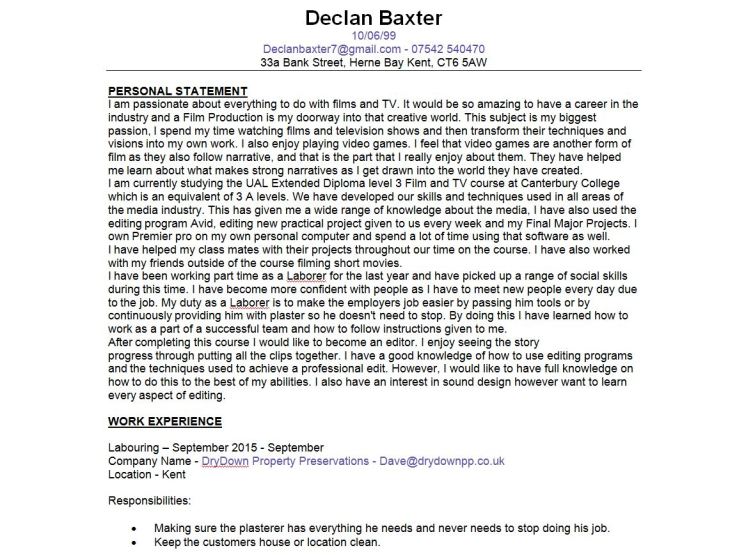

CV’s are a good way to show everything you have from grades to common social skills. This is a very common if not required document that most employers ask for before you are considered for a place at a job. This allows them to briefly understand all you have achieved and some what of the type of person you are.
Timeline of my Work
https://magic.piktochart.com/output/21115225-timeline-of-my-work
Follow the link above to see the timeline of my work.
Observational Task
Yesterday we were tasked with going into Canterbury town to gather primary research for our final major project, mine is focused on film noir so I decided to find out more about light and how it adds mood to a shot. I also got some photos of things that fit within the film noir genre.
I answered a few questions before I left to carry out the research:
What do I plan to observe? – I will be observing light and how it creates different feelings depending on the environment. I will also look for anything that links into the film noir genre.
How will this help me? – It will give me a better understanding on how to create compelling lighting and use the environment around me.
What methods will I use the document my observations? – I will use the camera on my phone to take photographs of the thing that I see.
The First photo I took was of the clock tower in Canterbury, there is a mix of shadows and light which is a nice contrast and adds a different effect depending on where the subject would be standing.
There would be a sense of drama and suspense if the subject was standing in the tower where it is filled with darkness and it may hint the character is ill willed and the bad guy. However if the character is standing in the light then he may be considered good heated and the good guy.
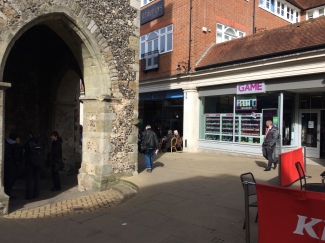

The next photos I took go together as they are both of alley ways. This on its own gives a feeling of suspense as alleyways are commonly used location for robberies in films. The shadow of the buildings in the alleyway reinforces that effect of suspense, this could add to the film noir feeling as there could be a crime happening under the cover of the darkness.




We then went to the vintage fair at UCA, there was a bar there which fit within film noir style. The bar is a common thing set around the 90’s which is a big thing in film noir. Neon light also add a really cool effect into a shot, it adds more colour to a scene rather than washed out background colours.
To add bring the saturated image to life more I could use Photoshop to keep the BAR sign in colour while everything else is black and white, this would create a cool effect which would make a somewhat dull image more interesting, however I don’t have photo shop on the computer I am currently working on. I could also translate this effect into video as well.

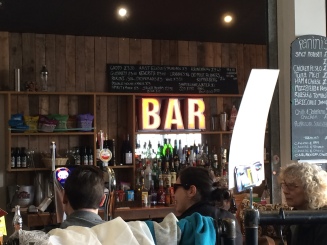

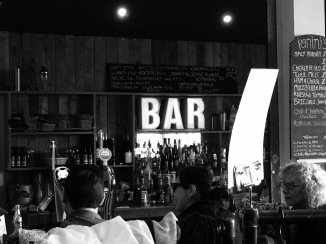
The next set of photos are film noir related as they go along with the bar scene, it reminds me of jazz which I commonly associate with film noir. It is set within a similar time period, it wouldn’t be a surprise to hear jazz music in a film noir.
The picture itself is much better in black and white, it bring the piano keys to life and makes them stand out much more. By having it black and white the keys shine so bright that it almost looks like there is some colour to it. The piano also becomes considerably darker when it is in black and white, this contributes to the effect of the keys beings bright white.
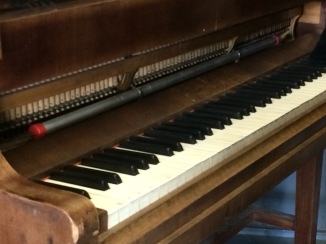

The last pictures are of a face sculpture outside the Marlowe Theatre, the way the shadow is covering half of the face almost mimics a result you could achieve from the three-point lighting method. It gives a nice effect that can translate into many different thing such as, it could be made to look like the face is peeking around a corner or through a door. This is a good-looking techniques which could be easily implemented into film noir.
The face on its own is sinister without any context. The expression on its face looks sad and again without any context it could mean anything or be used for anything in a range of different genres.


Conclusion
For this task I took some very effective photos for the film noir genre, however I would of liked the photos to be a lot darker than they are. This could have been achieved by shooting later in the day when the sun is down, alternatively I could take the images into Photoshop and make it darker by editing it manually.
Some of the photos I took looked better when I turned it into a black and white image. This makes me think about when I do my Final Major Project whether I should make it black and white, which would also stick within the classic noir.
Academic Report – Unit 12
In this report I will be explaining and analysing all the research and research techniques I used which led me to become interested in the genre of noir films, and to find out about the history, social, cultural and industrial methods of my chosen discipline of film noir. I will be reviewing the content I found and talking about how it will influence me in my ideas and progress for my Final Major Project.
Explaining
To start of my research I chose a job role within the industry of media which was Cinematography, this led to me researching about all the kinds of things a cinematographer would implement into a project. I looked at techniques such as rule of thirds and natural framing, looking into the techniques used led me to the final scene of ‘The Usual Suspects’ (1995) and how the choice of camera movement dramatically changed the outcome of the scene.
(Sunil Kadam, 2011)
While looking into the film ‘The Usual Suspects’ (1995) I realised fear was a huge part of the narrative, so I looked into fear as a tool in film making. I looked into the different ways fear can be used in film. I found that fear can be interpreted two different ways in film. Horror being the most common genre related to fear and the other was using fear as a tool within itself to create a different emotion. A prime example of this is ‘About Time’ (2013) where the main character is afraid of losing someone, this could spark feeling of sadness in the audience which is what the creators of the film intended to do. ‘The Usual Suspects’ is a film that uses fear in a way to put across a characters reputation within the community he is in, ‘Keyser Söze’ the villain in the movie however no one who works for him has ever seen his face as he keeps his identity private and anyone who sees him is killed. This fear is represented through the other characters and the stories they tell about Söze. ‘The Usual Suspects’ directed by Bryan Singer is considered a neo-noir, which led me to research more about the genre of noir.
I started by looking into the history of film noir, I looked into where it began and the specific techniques that make up the genre. Some of the common techniques used in noir films are the use of black and white, this is more to do with the time period as coloured film didn’t start becoming popular until The Wizard of Oz (1939) was released in 1939. I spoke about how the genre tends to use similar narratives for example there is usually a link to crime in a film noir as well as a detective or private eye.
I then branched off and researched into neo-noir’s such as ‘The Usual Suspects’ and Sin City (2005). I looked into the character of ‘The Usual Suspects’ and how he was a perfect fit for the film noir genre. He worked so well as he was a complete mystery. Instead of having the cliché who done it murder mystery, everyone knew who done it but no one had ever seen the man behind the crimes.
I did a little bit of experimenting using my phone’s camera and my knowledge of the techniques used to create noir shots. I went out and took a few photos experimenting with shadows and lighting to try to recreate the effect of a noir film.
These shot worked well so I decided to experiment more using better equipment.
I wanted to experiment more with neo-noir so took some photos using a lighting set up. I used the basis of a three-point setup however I didn’t use the fill light as I wanted to cast some shadows onto the subject. I then took inspiration from ‘Sin City’ (2005) and photo-shopped one of the photos I took and made the subject in colour where as the background was saturated.

I used a cucocolis to shine a light pattern onto the subjects face and create an effect of blinds which is an iconic shot from noir films. I made two versions of the picture using the cucocolis, one which was saturated to fit the original film noir style and one that I left in colour to fit the neo-noir style.
After I looked at film noir and neo-noir as a broad topic, I narrowed down my research and read about two practitioners that were related to the noir scene, Michael Mann and Billy Wilder. I spoke a little bit about their history as people and as directors, for Michael Mann I focused mainly on his newest neo-noir ‘Collateral’ which I want to take inspiration from in my own work. However for Billy Wilder I looked at his work more generally as his work was primarily noir styled.
I looked at the way Michael Mann had used different techniques with colour in ‘Collateral’ as well as implementing techniques from film noir by using heavy shadows and lighting. This is the thing that make the film ‘Collateral’ really stand out to me when I watched it. I want to use this technique and try to transform it into my Final Major Project using lighting, shadows and colour to create really interesting results.
Analysing
From researching into cinematography I learned about some camera techniques that could help me present a story and progress a narrative. Some examples of this is the scene from ‘The Usual Suspects’ where the camera has a slow zoom as the character on-screen is finally figuring out who the villain was. The fact that the slow zoom was there brought more attention onto the subjects face which would support the fact he is unraveling all the event of the film.
By researching into fear it gave me an idea into the different ways I can use fear as a story telling tool. I started looking into it generally to understand how it is used in a broad range of different genres such as horror and romantic comedies. I later looked at how fear is used in ‘The Usual Suspects’ which is a neo-noir. I liked how it was used to develop a character within the story and began to look into film noir more.
I was looking at common techniques used in film noir so I could translate them into my own work, The common noir film is black and white and the protagonist is usually good willed and have the career of a private eye or a detective. They use heavy amounts of low-lighting to create shadows. I want to experiment with this in my Final Major Project, however I would like to try using colour like neo-noirs.
Modern noirs or neo-noirs are set in later time periods than original noirs, they use different techniques as well. They implement colour into noir style film while still using low-key lighting. A good example of this is ‘Collateral’ (2004) by Micheal Mann, he used lighting to create the effect that all the light in the scene is coming from the building and street lamps of the LA night life. Another common story telling technique used in neo-noirs is narration, this is generally the main character talking about what he has discovered or what has happened in the past to fill in the audience about things that they may have missed or things that could be properly translated into visuals.
I then experimented with lighting, using Cucocolis (Cookies) to create specific shadows onto the subject I want, this worked well and I will definitely be using this technique in my FMP. A unique neo-noir film is Sin-City (2005) it uses a mixture of colour and black and white, I experimented on my own with this and came out with some good results.
After that I looked into two practitioners and their work, Micheal Mann and Billy Wilder. I looked at the techniques they used in their films hoping that I could take inspiration from them. Micheal Mann focused a lot on bringing the story to life using the environment of LA at night during his film ‘Collateral’, he made the city a character itself instead of a playground the people walk around in. He uses lighting in the film but tries to make it appear to be natural lighting coming from the city such as street lamps and passing cars.
Billy Wilder used low-key lighting very commonly, he put a lot of focus onto the lighting in his films and created some good effects with it. I will be taking inspiration from the low-key lighting used by Wilder and trying to implement it into my Extended Project. Another common thing Wilder did was use narration, I will also take inspiration from this and use narration as a way of telling a story and progressing it without having to create unnecessary dialogue.
Range of Research and What I’ve Learnt
I have used a range of research to find out all this information about these different subjects, I have done primary and secondary research, using the internet and my own film knowledge. I have made mind maps using my own knowledge then using the internet to research more information then made another mind map to compare the two before and after research.
I also watched the films I mention in my reports so I have a better understanding on how the films were made, the techniques they use and the characters needs and desires that continue the narrative so I can talk about them in greater depth and detail.
From researching into all these topics I found out a lot of things about film noir that I didn’t know before. I have learned how to achieve low-key lighting and even experimented a little bit with it using limited resources I had at the time. I feel when I do this for my FMP I will have an even better outcome as I will have access to a lot more tools and space. This will allow me to experiment further and really push the amount I can do with lighting.
I learned about common story telling aspects of a film noir. These include narration for neo-noir, low-key lighting and the classic characteristics of the protagonist and the narrative. This will give me insight into how to correctly portray a project inspired by film noir/neo-noir.
I also researched into fear, I learned about multiple different ways of using fear in a narrative. Fear can be used as a premise for a film or can be implemented to add drama to the narrative or characters. I can implement this into my FMP as film noir is a good genre to implement fear as the story generally involves a crime, this knowledge about fear will allow me to add more back story and effect to a narrative that fit within film noir.
The first thing I looked into was cinematography which I knew quite a lot about before I researched into it, however I researched into different camera techniques used to improve the visual storytelling. I used the internet and looked into natural framing, rule of thirds and camera movement finding examples and description along the way. I understand how camera movement can be used to progress to the story or show how the character is feeling, I could use this along with narration to create a compelling narrative that goes with compelling visuals.
When I researched into my two chosen practitioners I found out about the common techniques that they both use, this will allow me to mimic these techniques in my own way to come out with a unique project.
In conclusion, during this report I analysed the research I did which help me have a better understanding on the things I looked at. I found out a lot about film noir that I didn’t know before, this will help me create a visually compelling project following the characteristics of a film noir. I learned about the genre of neo-noirs, I had no idea that they were separate to classic film noirs before doing research into it. This research again allows me to implement aspects of both classic and neo-noirs into my work. The research I found on fear will also help me with creating a compelling story as it is a common emotion used in many genres of film.
Bibliography
(No Date) Available at: https://www.youtube.com/watch?v=chTT4OIDyzY (Accessed: 6 March 2017).
Sunil Kadam (2011) Ending – the usual suspects *spoilers* best scene ever. Available at: https://www.youtube.com/watch?v=XYXXhn9fMYs (Accessed: 22 February 2017).
Practitioners Report

Micheal Mann is an American director known primarily for the feature film ‘Heat’ (1995). He was born on the 5th of February, 1943 in Chicago, Illinois, United States. He has two children named Ami Canaan Mann, Aran Reo Mann and is married to Summer Mann who was an Art Director on a short film called White Horse (2010).
He has been credited as director on 20 productions however has been apart of many others as different roles such as the Cinematographer for 17 Days Down the Line (Documentary Short) (1972).
He is still in the industry and has announced a new project, ‘Untitled Tony Accardo/Sam Giancana Biopic’ Which he is directing and producing however it currently has no release date.
As my chosen interest for my final major project is film noir/neo-noir, I am going to look at Micheal Mann’s recent neo-noir, Collateral (2004) starring Tom Cruise and Jamie Foxx. The film is set in Los Angeles (LA) during the night, a hitman hires a taxi driver to drive him from target to target. The choice of shots in this film represent the night life of LA in a very unique way, it uses reflections in the car window and the background to show the busy night life.


The image above is an example of the types of shots that is used in Collateral that follows the neo-noir genre. Most neo-noirs are shot in colour but still implement the use of shadows and strong lighting, this shot uses shadows to create mystery about the character in shot. The out of focus city lights in the background makes the character really stand out and greatly improves the impact of the shadow, it makes him seem like a powerful figure towering over the city which works with his job title as a hired killer.
The narrative of this film is quite different to the generic noir film. It does follow crime however from the point of view of the villain, Vincent played by Tom Cruise. Although the villain in this film is more of an anti-hero, Michael Mann uses back story and companionship between the two main characters to make Vincent into a more likeable character and makes it appear that what he is doing as just a job which fits the theme of film noir as not everything is black and white. Another thing that supports this is the ending of the film. Vincent dies after a shootout with the other protagonist, Max played by Jamie Foxx. Although he is supposed to be the villain in the movie as a viewer you cant help but feel sorry for him and upset with the events of the night.

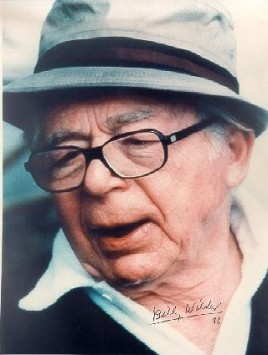
Billy Wilder is a director/screenwriter mainly know for his popular film noir ‘Sunset Boulevard’ (1950) and ‘Double Indemnity (1944). He’s a credited director for 27 productions however has been credited for writing over 80 projects.
He was born on the 22nd of June 1906 in Sucha Beskidzka, Poland and died on the 27th of March 2002 in Beverly Hills, California, United States. He was married twice to two different women, Audrey Young and Judith Coppicus. He had two children with his first wife Judith Coppicus, a boy called Vincent Wilder and a girl named Victoria Wilder.
Billy Wilder originally wanted to become a lawyer but he later chose to forget about the path and become a reporter working for the Viennese newspaper he later used the experience he got from that job and moved to Berlin. He started to work with film as a screenwriter in 1929 and wrote many scripts for German film. This is until Adolf Hitler came to power in 1933, in which Wilder thought his Jewish ancestry would cause problems so he moved to Paris, and later the US. This didn’t stop him with his passion in films, although he couldn’t speak much English when he got to the US, he got into American films thanks to his roommate Peter Lorre who taught him the language.
Billy Wilder has many trade marks in his films. He very commonly uses low-key lighting which give films a dark feeling to it, low-key lighting is technique also commonly used in film noir. It gives a sense of mystery to the scene and fits the genre its trying to be. Although it isn’t by Billy Wilder, A good example of this in modern neo-noir style is the picture below from the film ‘Fight Club’ (1999) Directed by David Fincher. As we are introduced to the character of Tyler Durden he asked the protagonist to hit him. The context of the scene and the characters fit well with the genre trying to be created. Another thing Billy Wilder does in a lot of his films is starting it with a narration. This is a common thing used in neo-noir films. This is a good technique used in many films to progress the story and show what the character is feeling.

(Film, no date)
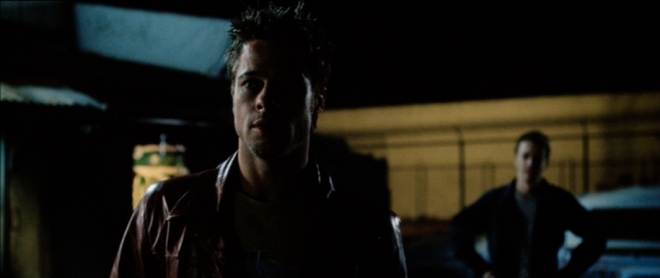 (Recent posts, 2014)
(Recent posts, 2014)
Conclusion
Both Billy Wilder and Micheal Mann have influenced me creatively. I will be taking inspiration from their productions and techniques and transforming them into my FMP. I like the look of the low-key lighting used by both Billy Wilder and Micheal Mann, specifically how it is used and experimented with in ‘Collateral’ and hope to implement into my own project.
Bibliography
2017 (1990) ‘Billy Wilder’, in Available at: http://www.imdb.com/name/nm0000697/bio (Accessed: 21 February 2017).
Film (no date) HIGH KEY, LOW KEY, LIGHTING, CONTRAST free cinematography Tutorial VIDEO PRODUCTION film school online, FilmSchoolOnline.Com, online film school, Lou LaVolpe, Louis La Volpe. Available at: http://filmschoolonline.com/sample_lessons/sample_lesson_cinematography.htm (Accessed: 21 February 2017).
Recent posts (2014) Available at: https://jenniferlymillsmoviecritique.wordpress.com/tag/low-key-lighting/ (Accessed: 21 February 2017).
Skateboarding Mind map

We were tasked with creating a mind map in a group, writing down everything we knew about skate boarding. As a team of four we had quite a wide range of knowledge between us which led to a lot of things being written on the mind map. There’s a whole culture dedicated to skateboarding, there are games, films, documentaries and sports events which includes competitions.
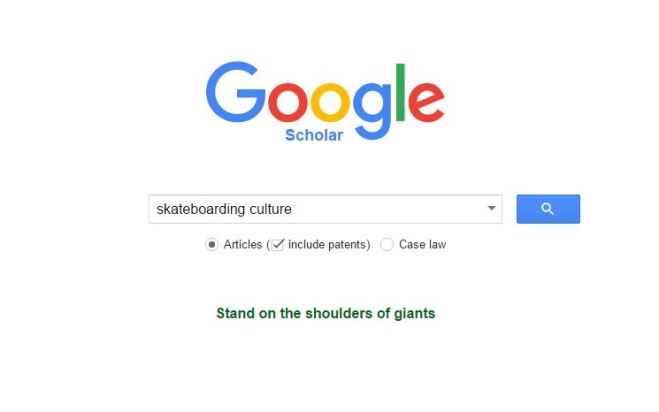
To find out more information in order to create a more detailed mind map, I use a website called Google Scholar which is a more academic version of google.

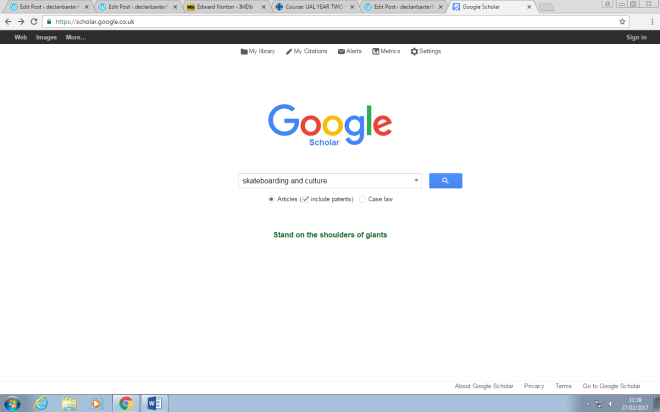
You can narrow your search and find easier results by using truncation symbols and boolean operators such as AND, OR and NOT. By adding these into your search it reduces the amount of results that appear and allows for a more specific search into the subject your researching. For example, by adding AND in between skateboarding and culture it will show all all results that have any relevance to them both.
The image below is the mind map after I did more research into skateboarding.

Reflection
The mind map above is after I did some more research into skateboarding. I found that by using Google Scholar and doing some research I found much more about the history of skateboarding. I found out about the way it came about and what initially started the sport, how it started off as a small hobby people did in within a small community and is now being introduced into the Olympics.
There is a big difference between our knowledge at the beginning of this task and now we have finished looking into the histories and stories of the subject of skateboarding.
Week 5 – Experimentation
Experimentation
I was tasked to do more experimenting with my theme of Film Noir. I wanted to look at shadows which is a big part of Film Noir, the use of objects to create shadows onto the characters face such as blinds on a window.
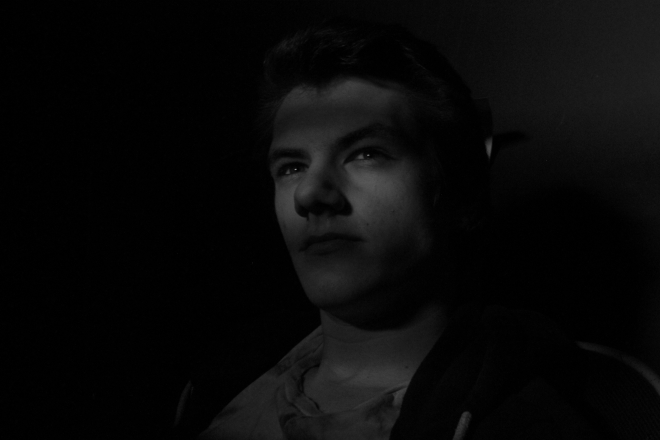
The photo above suggests the character is looking out the window late at night, this effect was created by using a sheet of cardboard that I cut out line to simulate the spaces in the blinds and placing it in front of the actors face. However it had to really close to the subject as the shadow would not appear other wise as the light would disperse around the cardboard and light his face up getting rid of the shadow.


The photo on the left is the piece of scrap cardboard I used to create the effect of blinds.
The technical name for something like the piece of cardboard is Cucocolis and Cookies for short. This is a common technique used to create shadows and outlines of shapes onto the subject in shot.
The photo below is an example of how it would work while using a cookie.


This is the original image I got, it has the same effect however is in colour. It still works as a Neo Noir but isn’t as mysterious as it is if it was it black and white. I shot it in colour as it is easier to change it in post than to change it on the camera, it gives you more options when editing the photo. To change it to black and white I took it into an online Photoshop as the computer I was walking on at the time didn’t have Photoshop installed.
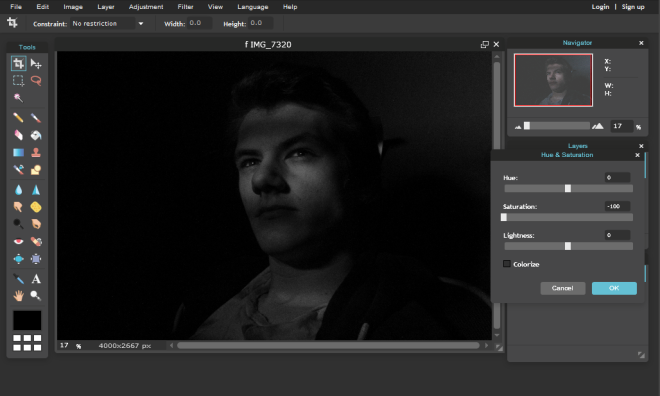

When the image was in online Photoshop I changed the saturation of the photo, this took all the colour out of the image and made it black and white. This gave it a more Noir feel and felt more authentic than the coloured image. I also adjusted the exposure in post to make the shot a little bit darker in order to make it more atmospheric and fits within the film noir genre more.

This image is out of focus due to the setting on the camera, however the technique used is a common Film Noir technique. I had another smaller piece of cardboard and I cut out a section roughly where the eyes would be so when I put it in the light there would be a border around the subjects face.
This technique is used to show a character looking through something and is usually used when the character is spying, such as looking through a crack in a door or a hole in the wall.

The photo above is a photo that I took using two lights trying to recreate the shadow style that is commonly seen in film Noir. I then turned the saturation of the image down in Photoshop to strengthen the film Noir aesthetic.

In this photo shadows are a very prominent part of the shot, the light is shining onto the subjects hat creating a shadow over his eyes. This adds a sense of mystery to the shot and supports the film Noir genre.
The change between colour and black and white improves the noir feel of this image. It makes the shadows stand out more as it eliminates all of the other colours being shown.

‘Sin City’ (2005) is a very popular Neo Noir. A Neo Noir is a modern film that take techniques and ideas from Noir films but tends to use more colour and focus more on the storytelling aspect of film Noir.
Sin City uses colour in a very unique way. The majority of the film is black and white however there are certain things in the film which use colour to attract the audiences eye.
 (wrote, no date)
(wrote, no date)
This is a strong example of how colour is used in Sin City, the bright yellow draws attention to the villain on the right who is the main focus of the scene and draws him out from all the dull black and grey colours.

This is my attempt at trying the ‘Sin City’ colour style. The subject in this shot is George sitting to the left, to make him stand out from the background better I turned up the saturation. As a lot of his clothes were orange and the light was a similar colour it gave him an orange tint overall which fits with the use bright colours in Sin City. This is a really easy effect that translate well on screen.
The choice of the colour orange in this image could represent he is a sort of anti-hero in a story. The reason being that orange is a warm colour that people could associate with fire which is both good and evil. Fire kept human kind alive thousands of years ago and provide us with a means of cooking food, however on the other hand, fire can burn us and destroy pretty much anything in its way.
To achieve this effect I used the magnetic lasso tool in Photoshop and created a mask around the subject.

I then made that into a new layer and turned the saturation of the background down to make it black and white. I did the opposite with the saturation for the subject, I turned it as high as it could go to bring out the most amount of colour possible.
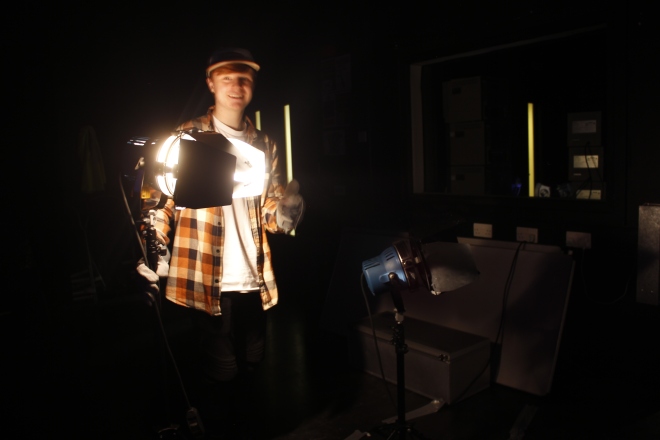
These are the two light we used to achieve the photos above. I set the lights up to the left of the subject so the shadow would cast to the right of the subject. I followed the three-point lighting setup however didn’t use a back light so i could achieve shadows on and around the subject
Bibliography
wrote, P. (no date) Creating the sin city effect. Available at: http://forum.tarantino.info/viewtopic.php?t=9387 (Accessed: 1 February 2017).
9417, haco (2012) Importance of color used in ‘Sin City’. Available at: https://visualrhetoricspring2012.wordpress.com/2012/04/23/importance-of-color-used-in-sin-city/ (Accessed: 1 February 2017).
Researching Film Noir
Introduction
For this task I am going to research into the genre of film noir and what makes one. I will look at classic noir films as well as more modern noir films, the techniques used to make a successful noir film and how to achieve these well.
Film Noir
On dictionary.com the definition they gave for film noir was, ‘a motion picture with an often grim urban setting, photographed in somber tones and permeated by a feeling of disillusionment, pessimism, and despair.’ (Dictionary, no date).
The genre was mostly implemented into american crime dramas in the post World War 2 era. The phrase ‘film noir’ is french for ‘dark film’, french critics branded the genre film noir due to the use of low-key lighting used to strategically improve the style of these dramas. The title of film noir wasn’t commonly used in public until the publish of ‘Panorama du film noir americain (1955) by Raymond Borde and Étienne Chaumeton.’
You can normally tell a film noir from the use of black and white and the amount of shadows used, however there are a lot of other things that makes up the noir genre. One of the commonly used techniques that make up a noir film are frequent use of flashbacks, this is used to tell the story but not in chronological order. There would be flashbacks to an event in the characters life for character development or a flash back of a crime scene to explain to the audience what happened.
There are intricate plots that tend to consist of a crime or a mystery as it is common that the main protagonist is apart of the law enforcement or a hired private eye. This gives the film a mysterious story that both the audience and the characters need to solve.
‘ the dark, gritty, and often deceiving visuals are a reflection of the characters, who themselves are dark, gritty, and deceiving.’ (Sasaki, 2015). This quote really sums up what a lot of the characters are like in the classic noir film, the characteristics of the story go hand in hand with the characters and give the whole film a sense of uncertainty and makes the characters untrustworthy.

(Reuben, 2014)
The picture above supports my explanation of how film noir uses shadows and lack of light to create a specific tone in a scene. By choosing to have little light in this shot, it creates a feeling of tension which goes hand in hand with the man is towering over the woman sitting down.
Neo-Noir
Neo-Noir stands for ‘new black’. This is what all the modern noir films are named under. A few films under this are, ‘The Usual Suspects’ (1995), ‘Collateral’ (2004) and ‘The Dark Knight’ (2008)
‘The Usual Suspects (1995)’ is a modern film that took techniques and ideas from the noir genre, the use of flashbacks is a big part of this film as its all told from the perspective of the protagonist during a interrogation. It cuts back and forth between the present and the past and as if he’s telling the story it shows us what happened.
(iPhilR’s channel, 2009)
The story follows a similar crime drama narrative as a classic noir film would based around a group of men who are told to work for a man that no one has ever scene before. The person they are working for is considered just a myth by some people and others fear him tremendously without ever meeting him. This is a good character for a noir styled film as it is mysterious, anyone could be him and it has you thinking the whole way through.
Experimenting with Noir
I went out and took some photos experimenting with noir and the ideas around it being dark and mysterious by using shadows and shots.
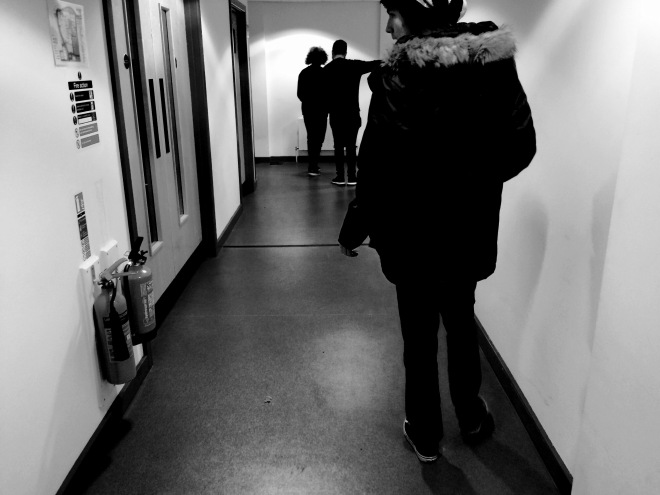 This shot shows three characters walking in a hallway, the shadows on the floor are strong however the ones on the wall are not as sharp which can be fixed with three point lighting, however the overall photo worked well for noir.
This shot shows three characters walking in a hallway, the shadows on the floor are strong however the ones on the wall are not as sharp which can be fixed with three point lighting, however the overall photo worked well for noir.
 This photo resembles a chase down a dark stairwell. The shadows would have made more of an effect if better lighting was used however I didn’t have access to any lights so had to try and use natural lighting. I still think it works well and would be a nice shot to use in a noir film.
This photo resembles a chase down a dark stairwell. The shadows would have made more of an effect if better lighting was used however I didn’t have access to any lights so had to try and use natural lighting. I still think it works well and would be a nice shot to use in a noir film.
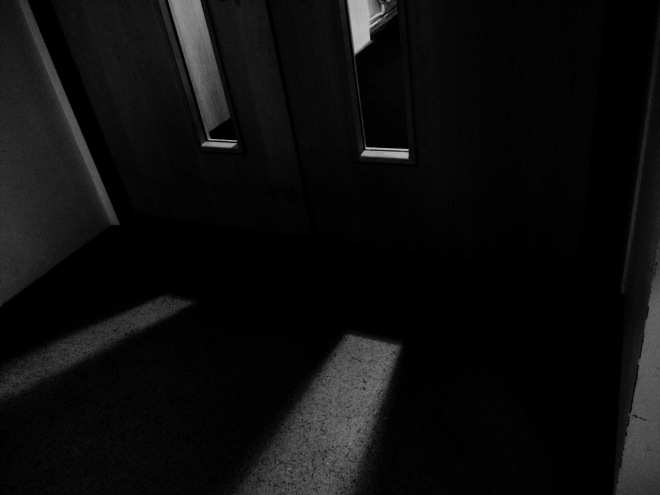
This is a nice shot of light coming in from behind a set of doors. This is mysterious and uses shadows well to create a curiosity about what might be behind the doors.
Reflection
Film noir is a technique that is only used for certain genres and can also be called a genre in itself. It is a very powerful technique used mostly in crime thrillers which has built the reputation around it. It is becoming more popular in modern day and is being experimented on all the time such as using colour within the black and white noir genre.
I have found that lighting is one of the biggest parts of Film noir, without it the genre would be really dull. Shadows and lighting bring life to the black and white, saturated films making them more interesting on the eyes and to the audiences.
Bibliography
Campbell, C. (2014) 11 modern film noir movies you must see. Available at: http://www.fandango.com/movie-news/11-modern-film-noir-movies-you-must-see-748489 (Accessed: 24 January 2017)
Dictionary (no date) ‘The definition of film noir’, in Available at: http://www.dictionary.com/browse/film-noir?s=t (Accessed: 22 February 2017).
Double indemnity Blu-ray (2014) Directed by Michael Reuben Blu-ray.com. (Accessed: 19 February 2017)
iPhilR’s channel (2009) The greatest trick the devil ever pulled was to convince the world he didn’t exist. Available at: https://www.youtube.com/watch?v=KnGo6Qm0Wt8 (Accessed: 25 January 2017).
Sasaki, K. (2015) The cinematography of film noir. Available at: http://www.screenhead.com/the-cinematography-of-film-noir/ (Accessed: 24 January 2017).
The Editors of Encyclopædia Britannica (2005) ‘Film noir | film genre’, in Encyclopædia Britannica. Available at: https://www.britannica.com/art/film-noir (Accessed: 24 January 2017).




